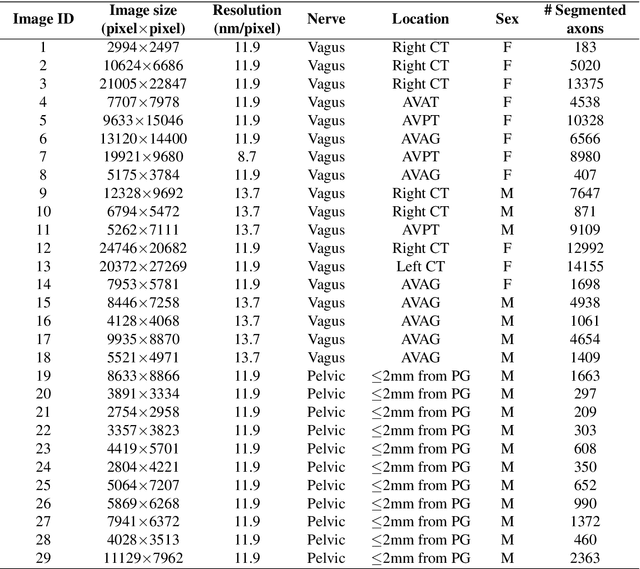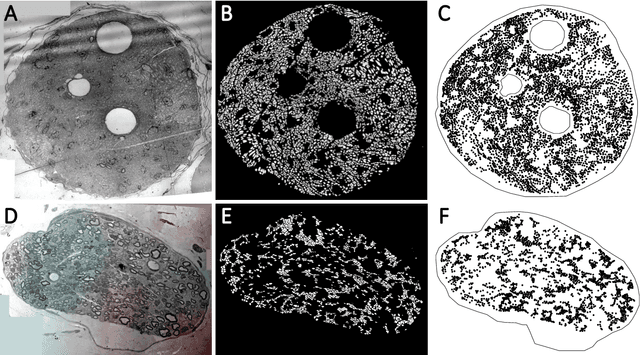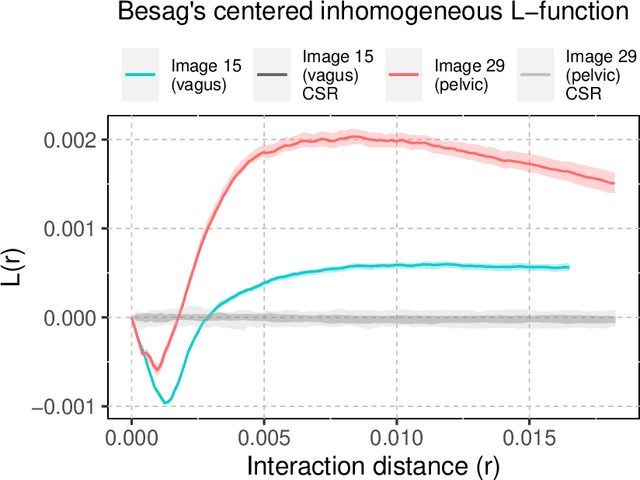Abida Sanjana Shemonti
Generative modeling of the enteric nervous system employing point pattern analysis and graph construction
Oct 26, 2022Abstract:We describe a generative network model of the architecture of the enteric nervous system (ENS) in the colon employing data from images of human and mouse tissue samples obtained through confocal microscopy. Our models combine spatial point pattern analysis with graph generation to characterize the spatial and topological properties of the ganglia (clusters of neurons and glial cells), the inter-ganglionic connections, and the neuronal organization within the ganglia. We employ a hybrid hardcore-Strauss process for spatial patterns and a planar random graph generation for constructing the spatially embedded network. We show that our generative model may be helpful in both basic and translational studies, and it is sufficiently expressive to model the ENS architecture of individuals who vary in age and health status. Increased understanding of the ENS connectome will enable the use of neuromodulation strategies in treatment and clarify anatomic diagnostic criteria for people with bowel motility disorders.
A novel statistical methodology for quantifying the spatial arrangements of axons in peripheral nerves
Oct 18, 2022



Abstract:A thorough understanding of the neuroanatomy of peripheral nerves is required for a better insight into their function and the development of neuromodulation tools and strategies. In biophysical modeling, it is commonly assumed that the complex spatial arrangement of myelinated and unmyelinated axons in peripheral nerves is random, however, in reality the axonal organization is inhomogeneous and anisotropic. Present quantitative neuroanatomy methods analyze peripheral nerves in terms of the number of axons and the morphometric characteristics of the axons, such as area and diameter. In this study, we employed spatial statistics and point process models to describe the spatial arrangement of axons and Sinkhorn distances to compute the similarities between these arrangements (in terms of first- and second-order statistics) in various vagus and pelvic nerve cross-sections. We utilized high-resolution TEM images that have been segmented using a custom-built high-throughput deep learning system based on a highly modified U-Net architecture. Our findings show a novel and innovative approach to quantifying similarities between spatial point patterns using metrics derived from the solution to the optimal transport problem. We also present a generalizable pipeline for quantitative analysis of peripheral nerve architecture. Our data demonstrate differences between male- and female-originating samples and similarities between the pelvic and abdominal vagus nerves.
 Add to Chrome
Add to Chrome Add to Firefox
Add to Firefox Add to Edge
Add to Edge